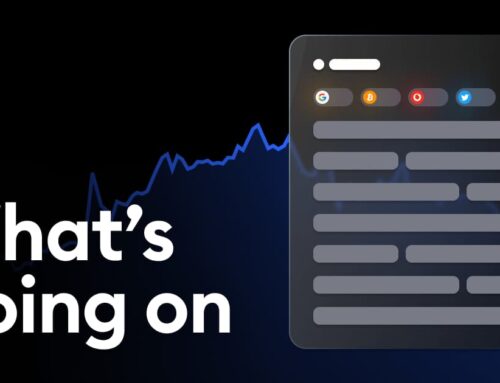Patients, stakeholders: Utah’s medical cannabis program has room for improvement
May 23, 2025
This is the fourth part in a series that explores the processes of creating cannabis medicines in Utah, from cultivation and production in highly-regulated facilities and research and development for new applications of the drug, to the process for patients of considering the alternative option, finding a doctor, getting a card and shopping at state-licensed pharmacies.
While Utah’s medical cannabis program is set up to work, and there are many groups working to regulate the system, it’s far from perfect.
Everyone, from program directors to patients, can agree on that, at least.
The biggest issues? Accessibility and cost.
For Nanette Berezhnny, a medical cannabis patient since 2021, those issues directly impact patients like her. She said the ability to have a medical cannabis card is fundamentally a privilege in the state.
Costs get high for a number of reasons. Since cannabis is a federally illegal Schedule 1 drug, none of the medication is covered by insurance, so patients must pay out-of-pocket for everything from initial doctors visits and frequent renewal visit fees to the medication itself.
While legislation passed this year will halve the cost of card applications from $15 to $8 and transaction fees from $3 to $1.50, doctors visits are billed by the providers.
When patients are first issued their cards, some renewal visits can be as often as every three months, and those visits can cost hundreds of dollars just to keep the card.
That’s one huge critique of keeping medical providers involved in the program: It’s just plain expensive. But for regulators, it’s important to keep that distinction.
Those renewal fees are one of the biggest barriers for patients in Utah, meaning some patients can’t afford to keep their cards long term. But it’s a catch-22 because the more patient retention the program has, the more incentive there will be to increase affordability.
“More patients, more power,” said Salt Baked City Magazine Founder Cole Fulmer, pointing out that the pay-to-play system is tough on the program. “We’ve had over 200,000 people get their cards in Utah, but we’ve only had 100,000 that are actually active. If everybody would have just stayed in the program, we would be in a different world right now.”
Fulmer’s magazine focuses on cannabis industry news and began publishing right after the program went live. His goal is to help Utahns understand the complex and ever-evolving industry, as well as the cannabis plant itself, for patients and non-patients alike.
Learning how to use the cannabis plant as medicine is one of the ways that costs get high too, said Berezhnny. Despite having a pharmacy-pharmacist system, Utah patients still need to purchase and try out different products to figure out what works best for their needs. It’s daunting, Berezhnny said.
“We’re learning a new product. We’re experimenting with it. We’re spending a whole lot of time trying to figure it out because there’s not really a lot of guidance and science to lead people on how to use medical cannabis,” Berezhnny said. “The endocannabinoid system is so complicated that we’re all playing mini-scientists and doctors sometimes, trying to figure out how to treat ourselves with this medicine that we know works. But there’s no easy program to tell us how to trial and error that.”
So, how to drive costs down? It has to be a multi-pronged approach, and it’s not easy, said Fulmer.
One element is those medical provider costs, and already it’s gotten better, said Utah Patients Coalition Executive Director Desiree Hennessy. When the program launched in 2021, there were so few medical providers registered and open-minded to issue cards that they could charge exorbitant prices to people desperate enough to pay for it.
“In the beginning, they were seeing prices like $300 to $500, nothing below $200. And then they were asking you to come back and renew in three months, so who has the money for that?” she said.
As more providers came on board, the prices went down, but with around 1,000 medical providers serving over 100,000 patients spread across the state, it’s still a tight market.
Having more providers opt in to the program, the hope would be that more patients could go directly to their primary care physicians for visits that may be eligible for insurance coverage. That structure would also make for ideal holistic care, said state Rep. Jennifer Dailey-Provost, who has been involved in bettering the program from a policy standpoint.
“Too often, instead of patients going to their own family physician or their own primary care doctor to ask for a medical cannabis card, they’re going to these ‘pot shop doctors,’ where you just go in, you pay $250, you get your card and you leave,” Dailey-Provost said. “It’s completely counterproductive to making this medication part of an overall continuum of care for patients.”
That’s why lawmakers passed a bill designed to make it easier for medical providers to begin recommending medical cannabis to patients who qualify. Now, any provider with a controlled substance license will be eligible to recommend cannabis after participating in four hours of relevant education materials, a change that will go into effect July 1.
The other concern for cost comes from the industry side. Because of cannabis’ federal status, all cannabis products must originate in the state from licensed cultivators and processors, then sold at licensed pharmacies. And Utah’s market is pretty tight compared to other states, said Curaleaf’s Luke Flood, a regional senior vice president with the multi-state brand.
“We don’t see a lot of states that only have eight cultivation centers or 15 retail locations,” Flood said. “One of the benefits of being vertically integrated is we can make sure that when we’re saving money on the cost structure side, we can pass on a more affordable price to our consumers and to our patients.”
To be vertically integrated, businesses must be issued all three types of licenses in the state, which allows them to control all levels of production. But for licensees who don’t have that luxury, it’s really hard to keep prices down, said Fulmer. The result is a somewhat “cutthroat” environment, which requires legislation to help level the playing field, he said.
That’s something the regulators, like at the Utah Department of Agriculture and Food, are trying to be aware of, said Brandon Forsyth, who directs the department’s medical cannabis program.
“When you have a small market and just a couple players, it can more easily lend itself to price fixing and monopolies. We want to make sure that that’s not happening,” he said. “We work with the Legislature basically every year to run some bills to try to meet the needs of the patients without oversupplying the market or under supplying the market.”
This year’s session issued two more pharmacy licenses, which will up the state’s total to 17. They’re looking at putting those new retail spaces in more rural, medically underserved areas, with talk of areas like Moab or Tooele, or possibly somewhere in Wasatch County.
While the Legislature worked to decrease costs this year, Hennessy said one new law axed crucial programming designed to make medical cards more affordable: pop-up “card drive” events.
These events were a way for cannabis industry partners to drive down costs and increase access by hosting qualified medical providers at specific pharmacy locations where patients could be seen by the doctor, pay visit costs closer to the $100 mark and have a guaranteed return visit with the same doctor the following year, Hennessy said. And they were working.
But due to the format of these events — often held outdoors under tents — the Legislature put a stop to them.
“Are we just picking on the poor? ‘Oh, I’m sorry you have to get your medical treatment out of a tent, and that makes us feel icky. So please don’t do that anymore. We’re going to legislate against it,’” Hennessy said. “It was just a low blow, in my opinion, because we didn’t stop access for people with money. We didn’t stop access for people that had a doctor that was willing to work with them. We stopped access for people that were struggling to pay for their card and for patients that did not have a doctor.”
While the state’s cannabis program aims to improve, instances like what happened with card drives this last session makes these shifts near glacial efforts.
“That’s the history of Utah Medical Cannabis,” said Fulmer, who’s tracked the program as a journalist since the passing of Proposition 2 in 2018. “We take a few steps forward, but we always take a few steps back in some regard.”
The steps forward: Those new pharmacies should help address both cost concerns and accessibility barriers, another major issue. But Berezhnny said for patients, even if there are pharmacies nearby, that doesn’t guarantee it’s accessible.
“Even just that task of having to go spend that much time picking up your medicine, and if you have to do it weekly, if you’re on a budget, that’s a lot of time you’re spending,” she said.
Delivery options are available in some cases, which the Utah Department of Human Health and Services tried to make possible especially for rural patients, but not all patients feel comfortable or have the resources to research products on their own.
Lawmakers like Dailey-Provost said one of the consequences of an unaffordable and inaccessible program is that it drives patients toward the black market. The goal is to prevent that from happening, she said, not just because it’s illegal, but because it’s unsafe. There are no regulations keeping those products safe, and in most cases it’s already been rejected by much less strict recreational market standards, said Hennessy.
Utah Patients Coalition has had black market products tested a couple of times, she said, and while it’s illegal to do, they’ve found harmful residues like mold and even fire retardants.
“When they can’t sell it to a rec market because it’s too unclean or dangerous, they just put it in a zip lock bag and package it for the black market, and that’s what is being sold to patients that cannot afford our medical market,” Hennessy said. “That’s really a hard pill to swallow because this should be accessible to all those patients that need it, and instead, we’re pushing them to the dirtiest product on the planet.”
Fulmer said because it’s become somewhat “radical” to boycott legal cannabis, there needs to be an attitude shift in adults who then turn to the black market, or choose to drive to nearby recreational markets.
Because in both cases — using the black market or driving across state lines — Utah patients are breaking laws, said Forsyth.
“We trust the stuff we’re producing way more than the stuff from out of state,” he added. “We would rather they just be within the medical cannabis program in Utah.”
But for some, that’s just not possible yet.
Search
RECENT PRESS RELEASES
Related Post


